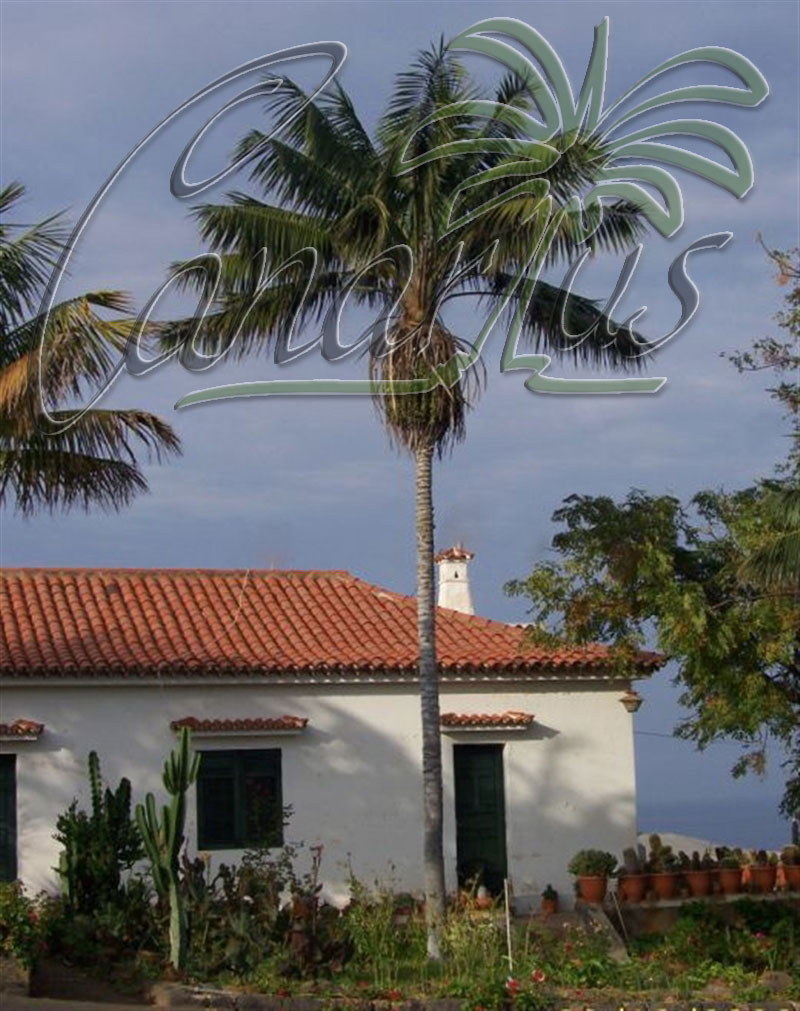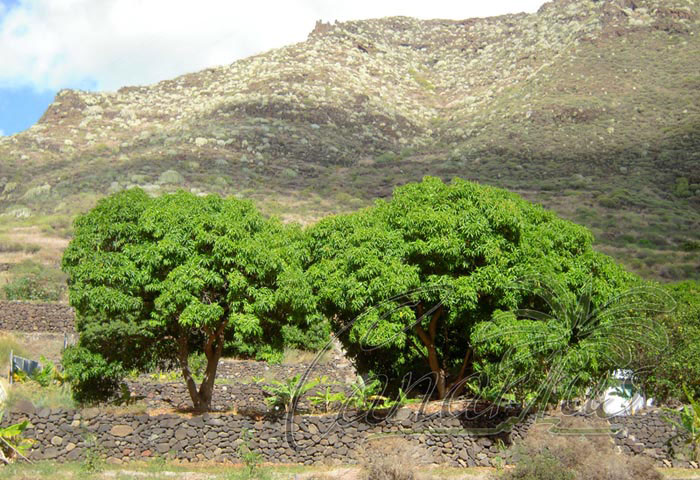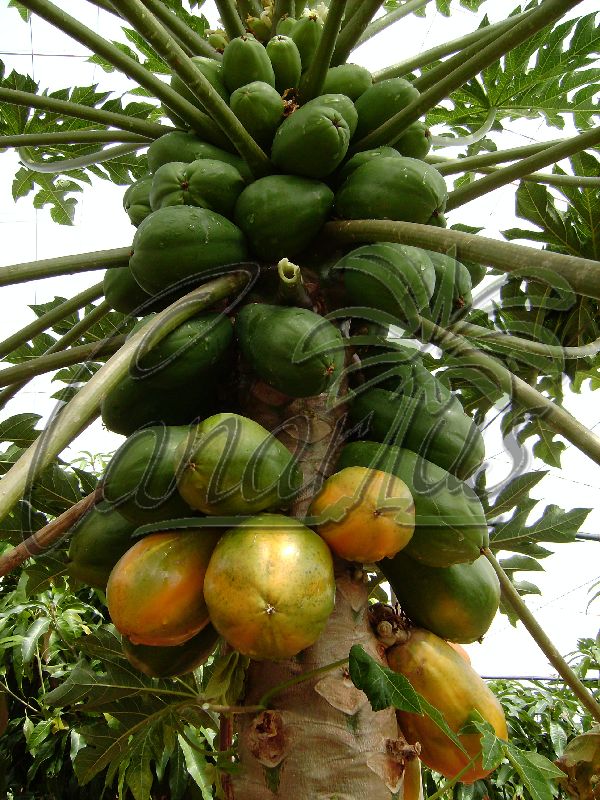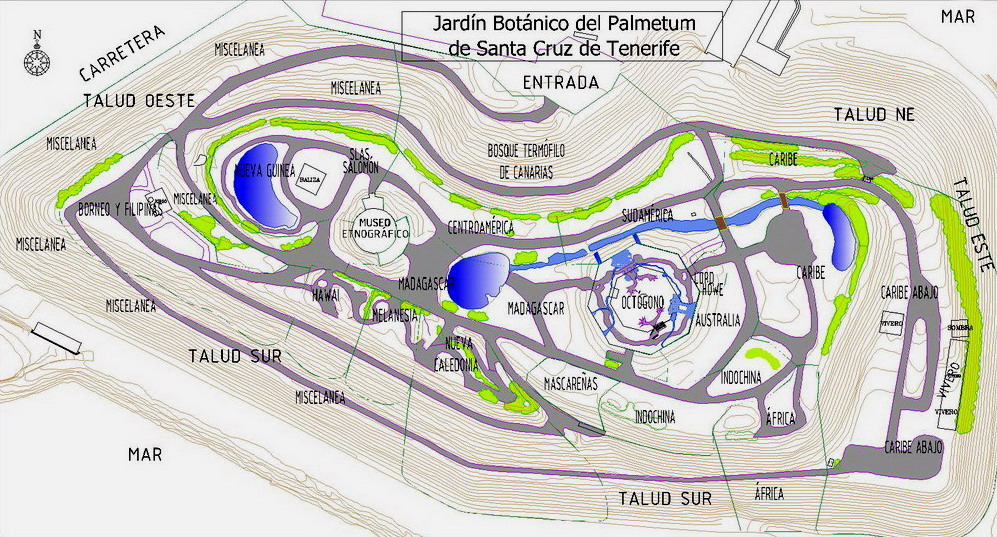The Canary Islands are an archipelago of volcanic origin, consisting of seven major islands, one minor island, and several islets. They are located in the North Atlantic Ocean, off the coast of the Africa, near Morocco and Western Sahara. They are part of Spain, as the autonomous community of the Canary Islands.
There is a mild, oceanic climate, spectacular volcanic landscapes, unique endemic nature and excellent Canarian Food and Cuisine.
The islands lived an interesting history, from the first aborigines, through colonial times, to the modern society and the recent decades of global tourism. Older architecture is well conserved on most islands and the city of La Laguna in Tenerife is a World Heritage Site.

Typical House in Tenerife, with a Subtropical Kentia Palm and Potted Cacti
Tenerife is the largest island, with about one million inhabitants; the island of Fuerteventura is the second in size, then Gran Canaria. There are two provinces: Santa Cruz de Tenerife is the capital city of the Western Islands and Las Palmas de Gran Canaria the capital of the Eastern Islands.
All the islands are volcanic in origin. All except La Gomera have been active in the last million years. The Teide volcano on Tenerife is the highest mountain in Spain and one of the largest volcanoes on an island.Coordinates are about Lat. 28°N and Long. 15°W.
The climate is oceanic and relatively mild. It is Subtropical to Mediterranean at lower altitudes and Temperate to Alpine at higher elevations, where conspicuous snowfalls occur regularly. The NE trade winds keep cooler summers and cause a major difference between the Northern and Southern slopes of the highest islands. Northern coasts are cooler, cloudier and rainier, while the South is drier, sunnier and warmer. Local climate can be very wet or very dry in some parts of the islands.

Two mango trees in the dry mountains of Southern Anaga, Tenerife.
Local nature is marvelous, endemic and endangered. Four of Spain’s thirteen national parks are located in the Canary Islands: Parque Nacional de la Caldera de Taburiente in La Palma, Garajonay National Park in La Gomera, Teide National Park in Tenerife and Timanfaya National Park in Lanzarote.

Fruiting papaya in the Canary Islands





















